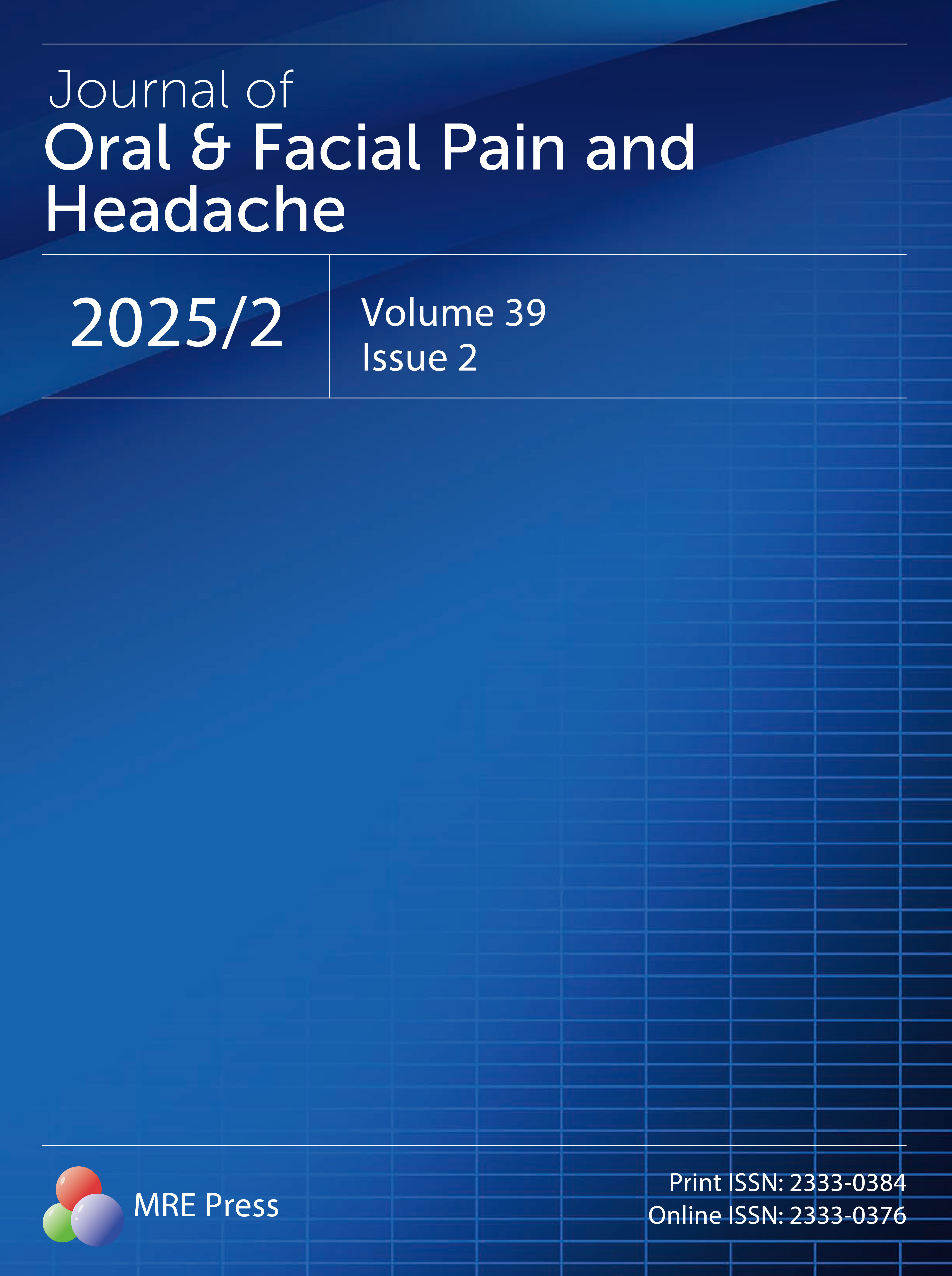Title
Author
DOI
Article Type
Special Issue
Volume
Issue
Article Menu
Export Article
More by Authors Links
Article Data
- Views 711
- Dowloads 48
Journal of Oral & Facial Pain and Headache (OFPH) is published by MRE Press from Volume 38 lssue 1 (2024). Previous articles were published by another publisher on a subscription basis, and they are hosted by MRE Press on www.jofph.com as a courtesy and upon agreement with Journal of Oral & Facial Pain and Headache.
Reviews
Open AccessAre Jaw and Facial Reflexes Modulated During Clinical or Experimental Orofaeial Pain?
Are Jaw and Facial Reflexes Modulated During Clinical or Experimental Orofaeial Pain?
1Department of Oral and Maxillofscial Surgery, School of Dentistry, Cluster Oral Physiology, Catholic University of Leuven, Leuven, Belgium
2Center for Sensory-Motor interaction, Orofaeial Pain Laboratory, Aalborg University, Aalborg. Denmatk
3Instituto di Ciinica Odontoiatrica, University of Parma, Parma, italy
*Corresponding Author(s): Antoon De Laat E-mail: Antoon.DeLaat@medkuleuuen.ac.be
Abstract
A variety of jaw and facial reflexes can be Evoked by orofacial mechanical or electrical stimuli. Because of ifs possible diagnostic utility in the management of pain and dysfunction of the masticatory system, the exteroceptive suppression that can be evoked in the masseter and temporalis muscles has been particularly investigated. A review of the different studies emphasizes the crucial importance of the area stimulated and the type of stimulation used to evoke the reflex. More recent studies have applied the necessary standardization of stimulus intensity, clenching levels, recording procedures, and unbiased interpretation of the reflex components in muscle electromyographic (EMG) activity. Controversial results have been reported regarding the differences in these inhibitory (and excitatory) reflex responses between temporomandibular disorder or headache patients and controls. Even if the absence of a second inhibitory phase in the masseteric EMG activity of the patients is a frequent finding, ifs sensitivity and specificity as a diagnostic tool for myogenous pain or bruxism remain to be tested. Controlled studies on the duration of the second exteroceptive suppression period in tension-type headache patients could not confirm the initially reported difference between patients and asymptomatic subjects. Studies that involve experimentally induced muscle pain could provide better insight into the characteristics of the afferent fibers and synaptic circuitry that are involved in the jaw and facial reflexes.
Keywords
temporomandibular disorders; exteroceptive suppression; electromyographic activity; reflex; jaw muscles
Cite and Share
Antoon De Laat, Peter Svensson, Guido M. Macaluso. Are Jaw and Facial Reflexes Modulated During Clinical or Experimental Orofaeial Pain?. Journal of Oral & Facial Pain and Headache. 1998. 12(4);260-271.
References

Abstracted / indexed in
Science Citation Index (SCI)
Science Citation Index Expanded (SCIE)
BIOSIS Previews
Scopus: CiteScore 3.1 (2024)
Cumulative Index to Nursing and Allied Health Literature (CINAHL)
Submission Turnaround Time
Preliminary Review: Typically 1–7 days (median: 5 days)
Peer Review: Typically 4–16 weeks (median: 8.6 weeks)
Notes: Review times may vary depending on manuscript complexity or reviewer availability, with some articles requiring longer than 16 weeks. Your information is kept confidential throughout the review process.
Top
